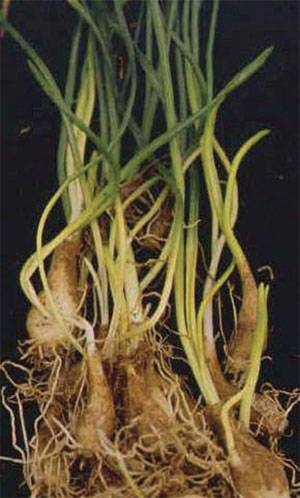Taking an environmentally sensitive approach to pest management
Pest Update Star-of-Bethlehem
(Ornithogalum umbellatum L.)
Published: March 14, 2008
Star-of-Bethlehem is an ornamental plant that has escaped cultivation to become a weed in a variety of agricultural settings. This plant is a perennial from a bulb that grows throughout the winter months and completes its life cycle in the spring. It most often occurs in clumps and is one of the few plants that has a dark green color during the winter months when most other plants are dormant and brown. Because of this, star-of-Bethlehem is often misidentified as either wild garlic (Allium vineale L.) or wild onion (Allium canadense L.). However, star-of-Bethlehem does not have a garlic- or onion-like smell like these other weeds. Star-of-Bethlehem also has leaves with a distinctive white midrib unlike either of these other species.


Star-of Bethlehem is becoming more noticeable and troublesome in wheat fields, pastures and rangeland, in no-till corn and soybean fields, and even in some lawns and landscape settings. It is also poisonous to livestock that may graze it.

Unfortunately, Star-of-Bethlehem is very difficult to control with herbicides. Most herbicides typically utilized as a component of a no-till burndown program in corn and/or soybean such as glyphosate (various trade names), Liberty, and 2, 4-D ester will only provide minor suppression of this weed, but often provide enough foliar burndown so that the plants are not competitive with newly planted corn and soybean. Sequential applications of Gramoxone spaced 3 or 4 weeks apart have actually provided some of the best control of star-of-Bethlehem in our no-till burndown research, and researchers at Southern Illinois University have observed similar results. For more information on this and other weeds, visit the MU Weed ID Guide Web site at http://weedid.missouri.edu.
Subscribe to receive similar articles sent directly to your inbox!
REVISED: October 2, 2015